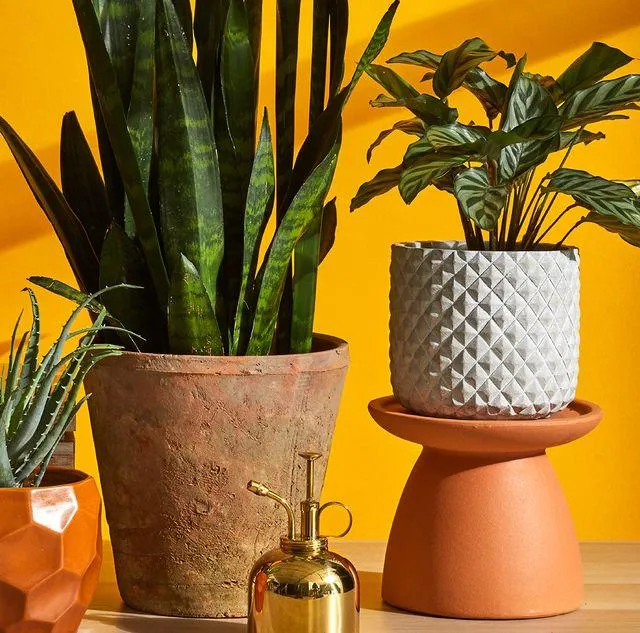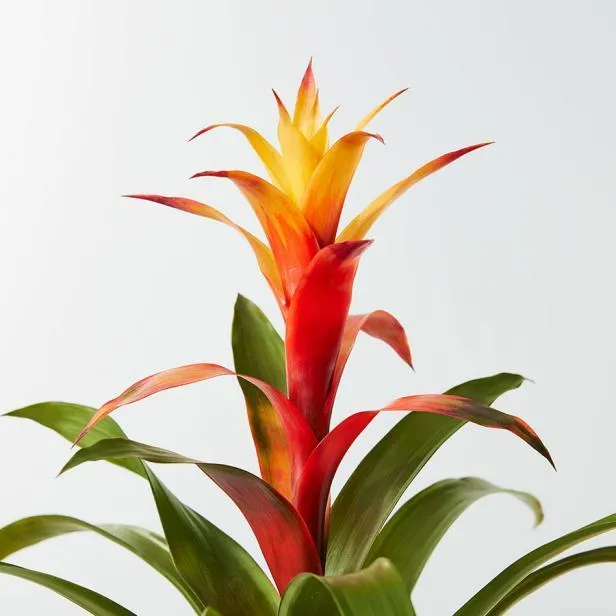Top Indoor Tree Options for Low Light Environments
If you want to add some greenery to your home but don’t have ample natural sunlight, fear not. There are several tree varieties that can thrive in low light. As someone who has struggled with low light conditions in some of my old apartments, I’ve certainly faced the challenge of finding indoor plants that will survive. Through trial and error, here are some of the best indoor tree options for low light that I’ve found to do quite well.
Snake Plant (Sansevieria trifasciata)
- One of the hardiest houseplants when it comes to low light, the snake plant is basically the goat of indoor trees. It can thrive on very little light—we’re talking less than 100 lux, which is comparable to a night with a new moon. In fact, snake plants were used as air filters on NASA’s space shuttles due to their ability to remove toxins from the air. Picked up a few snake plants of different heights to fill out space for under $20 each at my local hardware store.
- They’re also very low maintenance. Let the soil dry out between waterings, water only when the top inch is dry. I like to snake plants because they’re super forgiving—you can go weeks without watering and they’ll be fine. Just don’t overwater them!
- Their stiff, sword-like leaves add an interesting texture to any room. Snake plants come in various shades of green and can grow more than 3 feet tall, so they work well as a statement tree even in low light.
Pothos (Epipremnum aureum)
- Another great option is pothos. As the name suggests, it’s a trailing vine plant perfect for hanging or letting it grow along a bookshelf. Pothos can thrive on just 3 hours of sunlight per day or artificial light.
- I’ve basically abused mine by ignoring it for weeks but it bounces right back after a good watering. The leaves come in various shades of green and yellow variegation. Some varieties even have heart shaped leaves!
- Pothos can trail for feet so it adds a lush element without taking up much floor space. You can find starter cuttings for just a few dollars at most nurseries and shops.
Chinese Evergreen (Aglaonema modestum)
- Chinese evergreen is one of the most colorful indoor tree options for low light. Its broad, elegant leaves come in shades of pink, green and cream variegation. The plant has an almost prehistoric look to it that I find stunning.
- I keep mine about 6 feet from a west facing window and it seems quite happy. Chinese evergreen tolerates very low light levels and humid conditions well. It grows well in average home temperatures between 60-80 degrees F.
- Be careful not to overwater it though. Mine bounced back after sitting in waterlogged soil for too long! Let the top inch dry out before watering. In moderate light, it can grow 2-3 feet tall which makes a lovely accent plant.
Janet Craig Dracaena (Dracaena deremensis ‘Janet Craig’)
- Also known as the corn plant, Janet Craig dracaena is one tough cookie. I have one in my bedroom that gets no direct sunlight and it’s still chugging along quite happily.
- Its stacked green leaves with creamy white edges resemble corn and add a unique, tropical vibe. It tolerates very low indirect light and average household temperatures of 60-80 degrees F. I find this plant quite carefree and slow growing over the years.
- At mature size it reaches 3-4 feet tall but stays compact, making it ideal even for smaller spaces. Water sparingly, letting the soil dry out between waterings. Dracaena tolerates underwatering better than overwatering so go gently!
ZZ Plant (Zamioculcas zamiifolia)
- Another common and very tolerant indoor tree option is the ZZ plant. Its thick, waxy green leaves are attractive and it grows well in conditions most others would die in—extremely low light, infrequent watering and wide temperature changes. Heck, I’ve even forgotten about mine for months and it’s still kicking!
- Because of its low water and light needs, the ZZ plant is practically impossible to kill! It grows very slowly into a cluster form. ZZ plants are great for bedrooms, offices or anywhere with low light levels.
- It’s also pet friendly and non-toxic if swallowed. At mature size these reach 1-3 feet tall but stay pretty compact. I find ZZ plants to be low stress, nearly bulletproof indoor plants.
Cast Iron Plant (Aspidistra elatior)
- Another ironclad indoor tree suited to dark corners is the cast iron plant. I know someone who kept one below a kitchen cabinets for decades in practically zero light! Its leaves can grow up to 2 feet long and it has an architectural, exotic look.
- Cast iron plants are naturally shade tolerant and remarkably drought resistant once established. They grow very slowly—think inches per year. In some Victorian homes they were placed in cellars and survived for 50+ years!
- Water sparingly, letting soil dry out between waterings. They can handle brief temperature fluctuations but prefer average household temps of 60-80 F. Cast iron plants add lush greenery even in very dim light with minimal care.
So in summary, those are some excellent indoor tree options that do well even in low light conditions like offices, bedrooms or areas without strong natural light exposure. Hopefully those give you some ideas to experiment with. Let me know if you have any other questions! With the right tolerant variety, it’s very possible to enjoy live greenery inside year-round.

Indoor Trees That Thrive in Low Light Conditions
| Tree Name | Light Needs | Water Needs | Height |
|---|---|---|---|
| Chinese Evergreen | Low to medium light | Keep soil slightly moist | 2-6 feet |
| Snake Plant | Low light tolerant | Allow soil to dry out between waterings | 2-4 feet |
| Peace Lily | Low to medium light | Keep soil moist | 1-3 feet |
| Pothos | Low to bright indirect light | Water when top 1-2 inches of soil dry out | Trail up to 8 feet |
| ZZ Plant | Low to medium light | Allow soil to dry between waterings | 1-4 feet |
FAQ
-
What types of indoor trees grow well in low light?
Some good options include snake plants, pothos, peace lilies, Chinese evergreen, and spider plants. They can survive with not very much sunlight. At the same time, too little light may cause them to grow slowly.
-
How much light do indoor trees need?
It really depends on the variety. Generally, low-light indoor trees need at least partial sunlight for a few hours daily. Otherwise, they might not look so good and leaves could die. Basically, the more light the merrier for them. But too much direct sun could burn their leaves either.

-
Is it hard to care for indoor trees?
Not really. Most only need water when the soil becomes dry. You can check the soil moisture by sticking your finger in. Strong light is better than too dim light. Nevertheless, overwatering is worse than underwatering. Also, clean the leaves and dust occasionally will keep them healthy. Overall, indoor trees are pretty easy to look after.
-
What kinds of trees add good color indoors?
Colorful plants like red-leafed trees or variegated foliage varieties can brighten a room. For example, Chinese evergreen, red-edged dracaena, and peace lily with white or pink leaves. They make an area appear more stunning. Spider plants also come in a variety of shades. Do indoor trees with shades of red or variegated leaves demand more light though? Perhaps so, to keep their strong color.

-
Should I fertilize indoor trees?
You don’t always have to, but it doesn’t hurt. You can use dilute liquid fertilizer every few months during the spring and summer. Just follow the package instructions. Fertilizer provides nutrients and makes them grow stronger. It’s sort of like plant food. Some indoor varieties might need it more than others though, based on the soil quality.
-
What if my indoor tree gets bugs?
Unfortunately, pests can sometimes show up. Look out for signs like webs, spots, or crawling critters. If seen, isolate the plant immediately. You can try rinsing insects off with water or use an organic insecticidal soap. As a last resort, there are also chemical sprays. It’s best to prevent bugs though with good growing conditions and cleaning leaves regularly. Maybe ask an expert for tips too!

-
How do I know if my indoor tree is healthy?
Some signs a tree is doing well indoors include bright green leaves, new growth, and strong stems. Unhealthy plants may drop leaves, look pale or wilted, and grow slowly. Check for pests too. You can also refer to care guides online. Experts agree the secret is providing proper sunlight, water, and occasional feeding. Still, not all trees will flourish inside. So doesn’t that basically mean following their needs?
